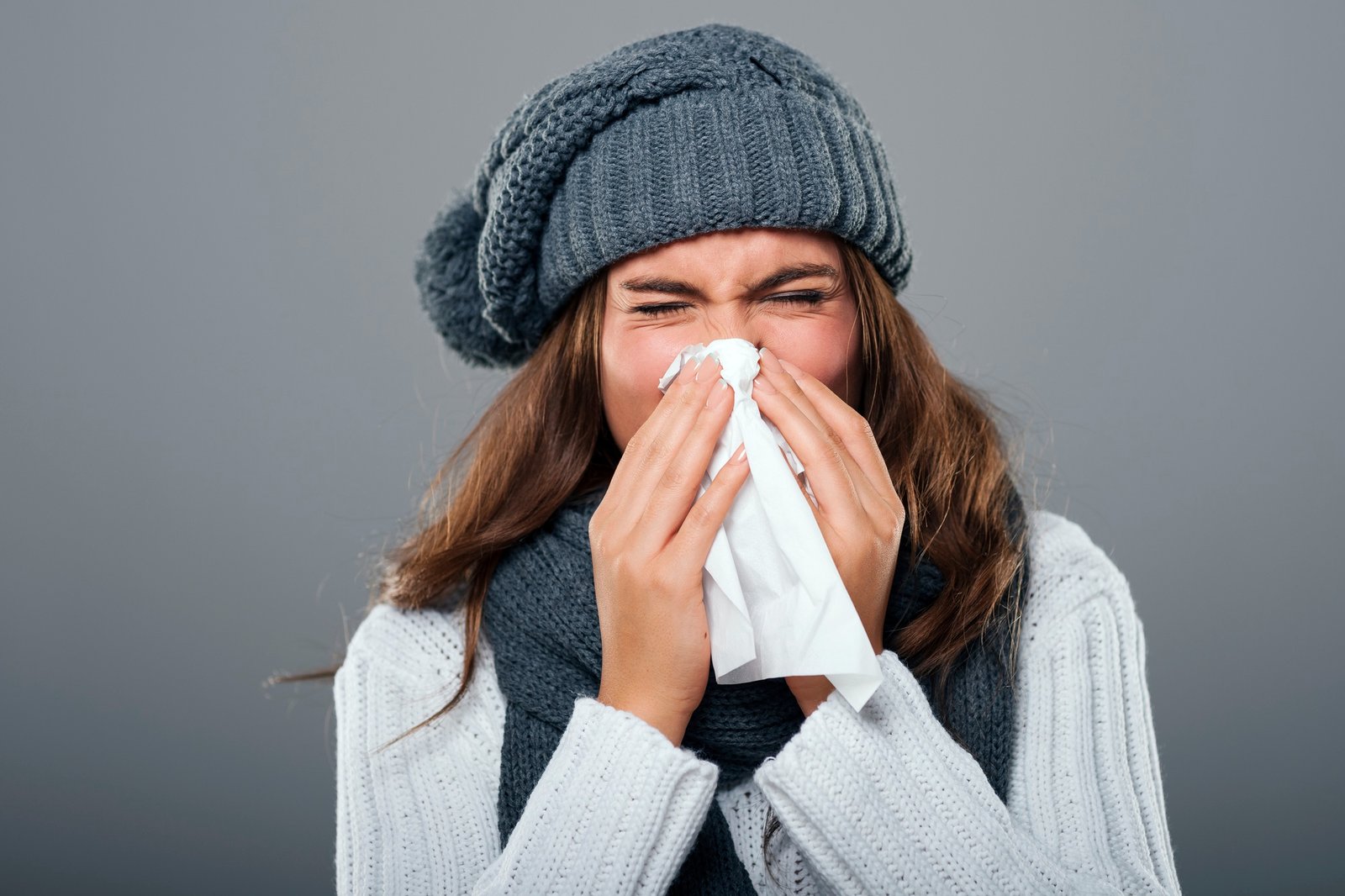Introduction
In the realm of infectious diseases, seasonal flu stands as a perennial adversary, annually affecting millions worldwide. This introductory exploration delves into the intricate tapestry of influenza, offering a succinct overview of its seasonal nuances. Beyond the common perception of influenza as a mere inconvenience, we unravel the intricate threads that bind it to the broader fabric of public health. The ripple effects of influenza extend far beyond the individual, posing a substantial challenge to the collective well-being of communities. As we navigate through the pages of this discourse, we illuminate the vital importance of proactive measures in our shared battle against the flu, underscoring the significance of preventative strategies in safeguarding public health.
Navigating the Waves of Seasonal Influenza: A Comprehensive Insight
As the cold winds usher in winter, so does the annual dance of influenza viruses. In this article, we delve into the intricate world of seasonal influenza, exploring the characteristics of influenza viruses, distinguishing seasonal flu from other respiratory illnesses, and unraveling the significance and unpredictability of flu seasons.
Understanding Influenza Viruses
Influenza viruses are notorious for their ability to mutate and adapt, presenting a formidable challenge to public health. The primary culprits, influenza A, B, and C, each exhibit unique characteristics. Influenza A, the most common and virulent type, is further classified into subtypes based on the surface proteins hemagglutinin (H) and neuraminidase (N), such as H1N1 and H3N2.
Seasonal Flu vs. Other Respiratory Illnesses

Distinguishing between seasonal flu and other respiratory illnesses is crucial for accurate diagnosis and effective treatment. While symptoms like fever, cough, and fatigue are common to various respiratory infections, the abrupt onset and specific complications associated with influenza set it apart. Understanding these distinctions aids healthcare professionals in providing targeted care.
The Significance of Influenza Seasons and Their Unpredictability
Flu seasons are not only significant but also unpredictable, making them a perpetual challenge for health authorities. Factors such as the emergence of new strains, the effectiveness of vaccines, and global travel contribute to the variability of flu seasons. This unpredictability underscores the importance of proactive public health measures, including vaccination campaigns and surveillance.
Common Challenges Faced During Flu Season
Spread of Influenza and Modes of Transmission
Influenza spreads through respiratory droplets produced when infected individuals cough, sneeze, or talk. Additionally, the virus can survive on surfaces for a brief period, leading to indirect transmission. Understanding these modes of transmission is vital for implementing preventive measures, such as frequent handwashing and respiratory hygiene.
High-Risk Groups and Vulnerability Factors
Certain populations, including the elderly, young children, pregnant women, and individuals with underlying health conditions, are more vulnerable to severe complications from influenza. Recognizing and prioritizing these high-risk groups ensures targeted interventions, such as early vaccination and prompt medical care.
Economic and Social Implications of Flu Outbreaks
Beyond the realms of individual health, influenza outbreaks have far-reaching economic and social consequences. The strain on healthcare systems, absenteeism in workplaces, and disruptions in education are notable challenges. Developing robust strategies for mitigating these implications requires a collaborative effort from governments, businesses, and communities.
Read Also: Measles: Understanding the Threat and Global Health Implications
Comprehensive Approaches to Flu Prevention: From Personal Practices to Global Cooperation

In a world constantly battling emerging health threats, it’s crucial to adopt multifaceted strategies for preventing the flu at both individual and community levels. From harnessing the power of vaccinations to leveraging cutting-edge technology and fostering global cooperation, the fight against influenza demands a comprehensive approach.
The importance of Vaccination and its Effectiveness
What to avoid after flu shot ?
After receiving a flu shot, it’s crucial to be mindful of a few things to optimize the effectiveness of the vaccine and ensure a smooth recovery. Firstly, avoid strenuous physical activity for at least 24 hours to allow your body to focus on building immunity. Additionally, refrain from consuming excessive alcohol, as it can potentially weaken the immune response. It’s advisable to steer clear of crowded places and close contact with sick individuals to minimize the risk of contracting other illnesses while your immune system is at work. Lastly, resist the urge to immediately jump into your regular routine; give yourself time to rest and recover, allowing the vaccine to do its job effectively. By being mindful of these post-flu shot practices, you can support your body’s immune response and enhance the overall effectiveness of the vaccination.
Strategies for Personal Prevention
Hygiene Practices to Reduce the Risk of Infection
Simple yet effective hygiene practices play a crucial role in preventing the flu. Regular handwashing, proper respiratory etiquette, and maintaining a clean environment can significantly reduce the risk of infection. Personal responsibility for adhering to these practices is vital for the overall well-being of the community.
Boosting the Immune System through a Healthy Lifestyle
A robust immune system is a powerful defense against the flu. Adopting a healthy lifestyle, including a balanced diet, regular exercise, and adequate sleep, enhances the body’s ability to fight off infections. Taking proactive measures for personal health contributes to the broader goal of flu prevention.
Community-Level Interventions
The Role of Public Health Campaigns in Flu Prevention
Public health campaigns play a pivotal role in raising awareness about the flu and promoting preventive measures. Through targeted messaging and education, these campaigns empower communities to take collective action against the spread of the virus.
Workplace and School-Based Strategies to Minimize Flu Spread
Workplaces and schools are potential hotspots for flu transmission. Implementing strategies such as flexible sick leave policies, vaccination clinics, and promoting a culture of health can significantly minimize the risk of outbreaks in these settings.
Community Engagement and Awareness Programs
Engaging communities in flu prevention fosters a sense of shared responsibility. Localized awareness programs, community partnerships, and grassroots initiatives empower individuals to actively participate in creating a healthier and more resilient community.
Technology and Innovation in Flu Prevention

Advancements in Flu Vaccine Development
Scientific advancements continue to drive progress in flu vaccine development. From novel delivery methods to more effective formulations, ongoing research enhances the efficacy and accessibility of flu vaccines.
Digital Tools for Tracking and Monitoring Flu Outbreaks
Technology plays a pivotal role in tracking and monitoring flu outbreaks. Digital tools, including real-time data analytics and mobile applications, enable timely responses and help communities stay informed about the prevalence of the virus.
Telemedicine and its Role in Flu Management
Telemedicine provides a valuable resource for flu management. Remote consultations, digital health platforms, and virtual monitoring contribute to efficient healthcare delivery while minimizing the risk of further transmission.
Global Cooperation in Fighting the Flu
International Efforts in Flu Surveillance and Research
The global nature of the flu requires international collaboration in surveillance and research. Sharing data, resources, and expertise enhances our understanding of the virus and facilitates more effective preventive measures.
The Role of Organizations Like the WHO in Global Flu Prevention
International organizations, such as the World Health Organization (WHO), play a central role in coordinating global efforts to prevent the flu. Their guidance, resource allocation, and advocacy contribute to a unified approach to tackling influenza on a worldwide scale.
Collaborative Strategies for a More Effective Response to Pandemics
In an interconnected world, collaborative strategies are paramount. By fostering partnerships between nations, organizations, and researchers, we can build a more resilient global community capable of mounting a swift and effective response to flu pandemics.
Flu NHS

In the realm of public health, the National Health Service (NHS) plays a pivotal role in safeguarding communities against the seasonal menace of influenza. As the flu virus unpredictably evolves, the NHS consistently adapts its strategies to provide widespread immunization, expert medical advice, and efficient treatment. Serving as the frontline defense against flu outbreaks, the NHS tirelessly promotes vaccination campaigns, emphasizing the importance of community immunity. Through its dedicated healthcare professionals and robust infrastructure, the NHS stands resolute in its commitment to minimizing the impact of the flu and ensuring the well-being of individuals across the United Kingdom.
Navigating the Path to Immunization: Overcoming Vaccine Hesitancy and Learning from the COVID-19 Experience
Overcoming Vaccine Hesitancy:
Addressing common misconceptions about flu vaccines
Misinformation can be a formidable barrier to vaccine acceptance. By debunking common misconceptions surrounding flu vaccines, we pave the way for a more informed public. It’s crucial to communicate that flu vaccines are safe, effective, and a vital tool in preventing the spread of influenza. Dispelling fears and offering transparent information can foster trust in the immunization process.
Public awareness campaigns to promote vaccine acceptance
Raising public awareness is pivotal in creating a culture of acceptance. Engaging and accessible campaigns can provide information on the benefits of flu vaccines, highlighting their role in safeguarding not only individual health but also the well-being of the broader community. Utilizing various media channels and involving community influencers can amplify the message, fostering a sense of collective responsibility.
Encouraging vaccination as a community responsibility
Vaccination is not just a personal choice but a collective responsibility. Emphasizing the interconnectedness of communities and the shared duty to protect vulnerable populations underscores the importance of flu immunization. Community-driven initiatives can reinforce the idea that each vaccinated individual contributes to the overall health and resilience of the community.
Learning from the COVID-19 Experience:
Parallels between flu and COVID-19 prevention strategies
The COVID-19 pandemic has highlighted the effectiveness of preventive measures such as vaccination, mask-wearing, and social distancing. Recognizing the parallels between strategies employed for COVID-19 and those applicable to flu prevention reinforces the importance of a proactive approach. This alignment can streamline the public’s understanding of and compliance with recommended health measures.
Lessons learned from the pandemic for future flu preparedness
The pandemic has exposed vulnerabilities in global healthcare systems, emphasizing the need for robust preparedness plans. Investing in research, stockpiling medical supplies, and establishing clear communication channels are vital components of future flu preparedness. Learning from the challenges faced during the COVID-19 crisis allows us to fortify our defenses against emerging infectious diseases.
Building resilient healthcare systems to handle infectious diseases
Creating resilient healthcare systems involves strengthening infrastructure, optimizing resource allocation, and enhancing collaboration between public health agencies and the private sector. The integration of technology and data-driven approaches can facilitate swift responses to emerging threats, ensuring that healthcare systems can adapt to and effectively manage infectious diseases.
Conclusion

In conclusion, safeguarding ourselves against the seasonal influenza requires a multifaceted approach rooted in both individual and collective responsibility. To recap, key strategies for flu prevention encompass maintaining good hygiene practices, getting vaccinated, and fostering a health-conscious environment. It is imperative to recognize that our actions ripple through the community, emphasizing the interconnectedness of our well-being. By embracing a shared commitment to health, we not only shield ourselves but also contribute to a collective defense against the flu. As we navigate the challenges of seasonal influenza, the significance of personal choices and communal efforts becomes glaringly apparent. Looking towards a healthier tomorrow demands a united front in the face of contagious threats, fostering resilience and fortitude in our communities. Together, we can build a robust defense against seasonal influenza, paving the way for a brighter and healthier future.
